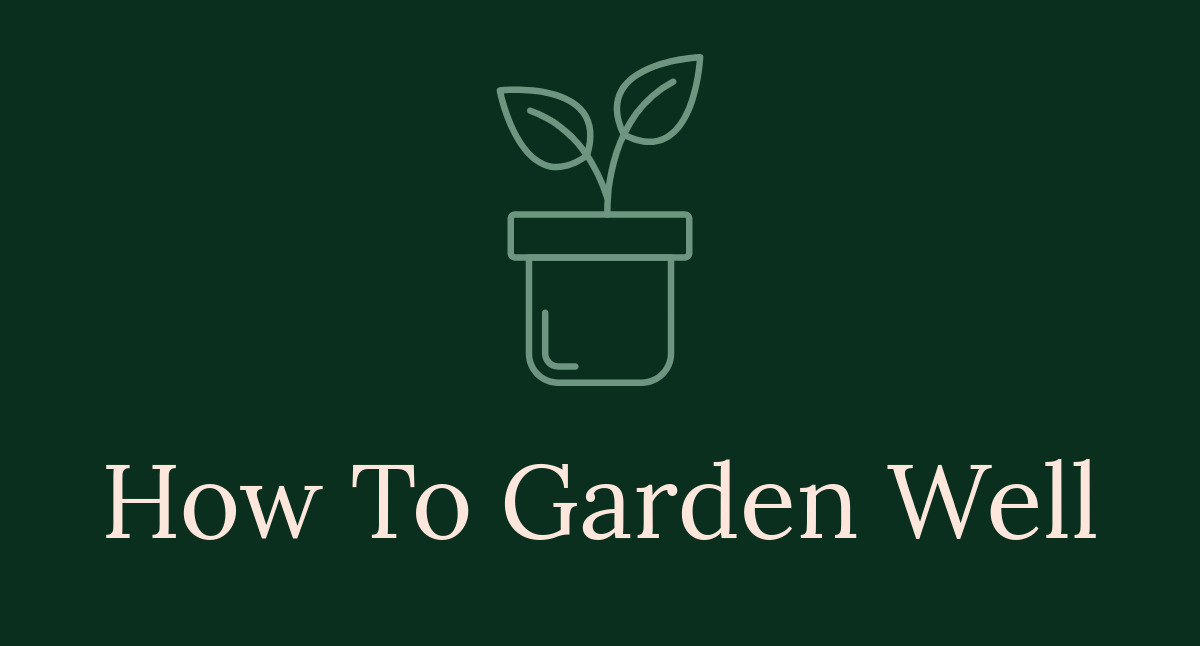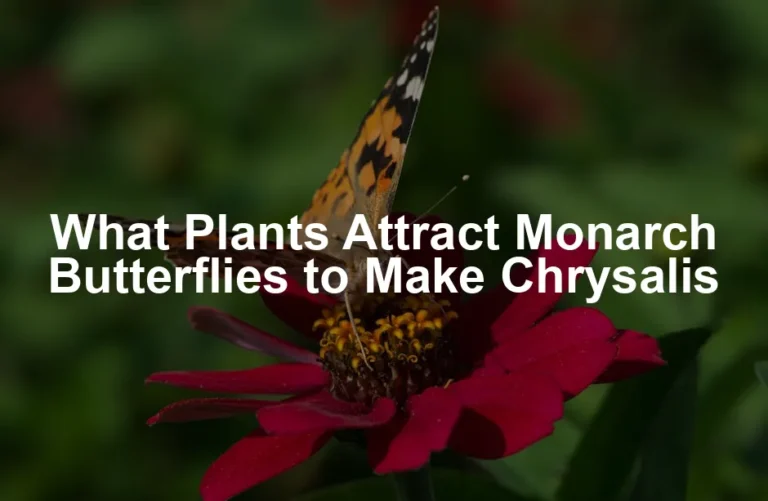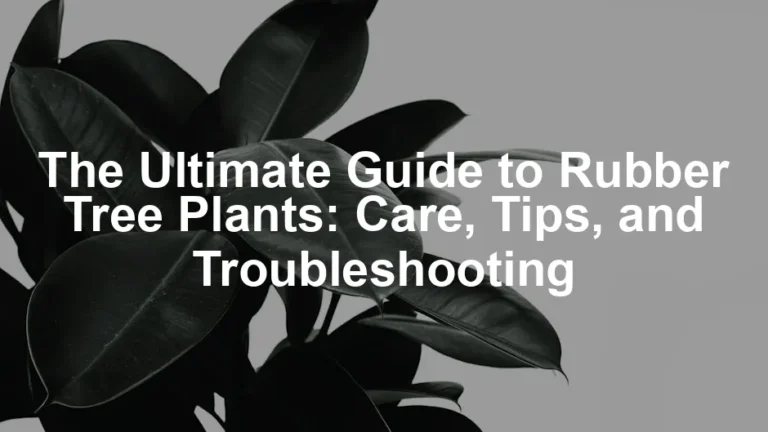
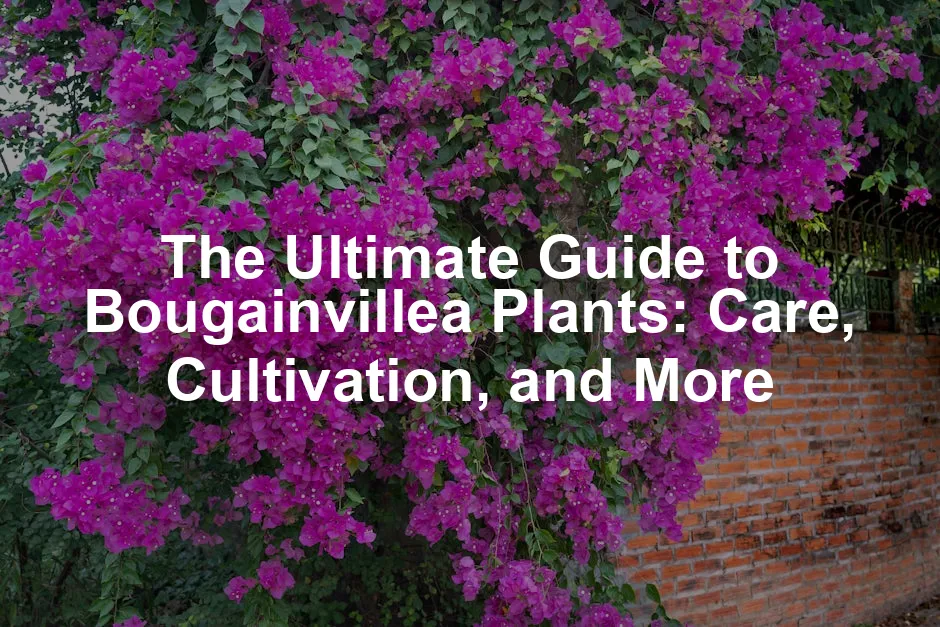
The Ultimate Guide to Bougainvillea Plants: Care, Cultivation, and More
Introduction
Bougainvillea is a stunning ornamental plant. Its vibrant colors and climbing nature make it a favorite in many gardens. Knowing how to care for bougainvillea is essential for optimal growth and breathtaking blooms.
Speaking of care, don’t forget the essentials! A good pair of gardening gloves can protect your hands from thorns while giving you the confidence to dig in the dirt! Plus, they come in all sorts of colors—because who says gardening can’t be a fashion statement?
Summary and Overview
Bougainvillea originates from South America, thriving in warm climates. Its popularity in landscaping is due to its colorful bracts, which resemble flowers. These plants bloom during summer and autumn, producing a spectacular display.
Bougainvillea can grow between 4 to 8 meters tall and spread about 1 to 1.5 meters wide. Its care requirements are straightforward, needing bright light and well-drained soil. This plant thrives in various settings, from garden walls to containers, adapting well to different climates. Whether you’re a seasoned gardener or just starting, bougainvillea is an excellent choice for adding charm to your outdoor space.
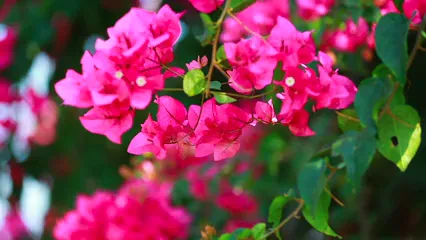
To give your bougainvillea the best start, consider using a quality fertilizer. It’s like giving your plant a hearty breakfast to kickstart its day and ensure those vibrant blooms come through!
1. What is Bougainvillea?
Bougainvillea is a vibrant, evergreen climber. It’s known for its stunning flower bracts, which often come in shades of purple, pink, red, and white. These bracts are not true flowers but modified leaves that give the plant its colorful appearance.
Commonly, it’s referred to simply as bougainvillea. Botanically, it belongs to the Nyctaginaceae family and has several species, including Bougainvillea glabra and Bougainvillea spectabilis. This plant thrives in tropical and subtropical climates, making it a popular choice for gardens in warmer regions.
Bougainvillea grows best in bright light and well-drained soil. It prefers warm temperatures and is often found climbing walls, fences, or trellises. Its natural habitat ranges from South America, particularly Brazil, to parts of Central America. These conditions contribute to its lush growth and vibrant blooms, making it a favorite among ornamental climbers.
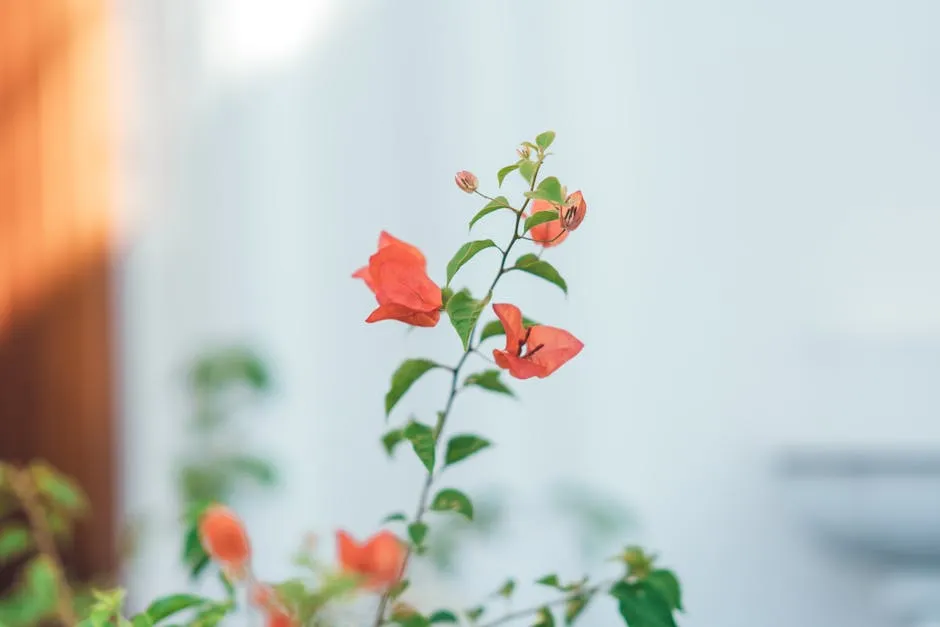
2. Types of Bougainvillea
Bougainvillea boasts numerous varieties and hybrids, each with unique features. Popular varieties include ‘Barbara Karst,’ known for its bright magenta bracts, and ‘San Diego Red,’ which features vibrant red blooms. These varieties add stunning color to any garden.
Color variations in bougainvillea can signify different traits. For instance, lighter shades may indicate specific growing conditions or hybridization. The growth habits of bougainvillea can also vary; some are bushy and compact, while others are climbing or trailing. This versatility allows gardeners to use them in diverse garden designs, from ground covers to hanging displays.
Incorporating various bougainvillea types can create a dynamic and colorful landscape. Their striking appearance makes them ideal for enhancing any outdoor space, ensuring a breathtaking display throughout the blooming season.
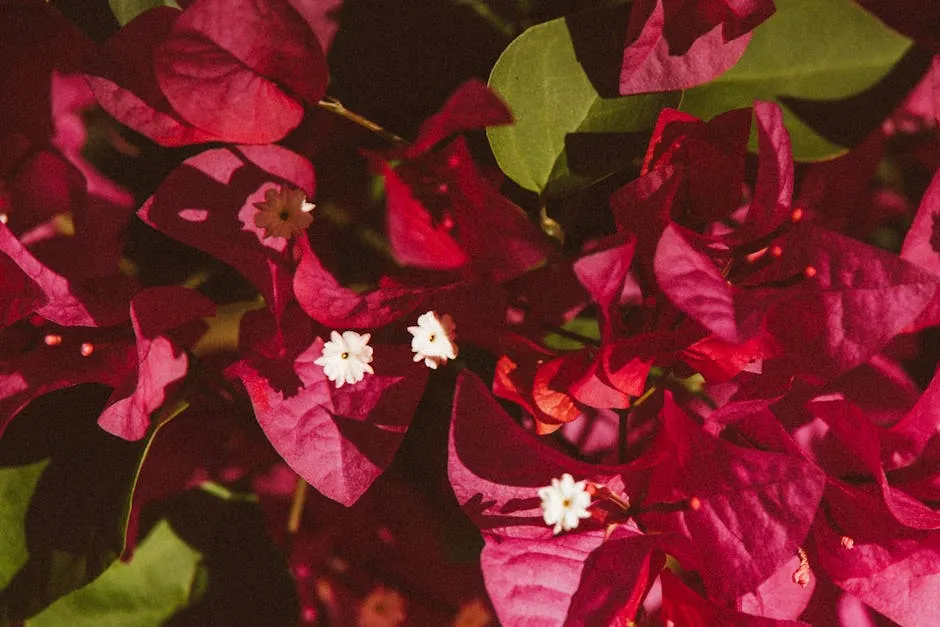
3. Ideal Growing Conditions
To thrive, bougainvillea needs plenty of sunlight. Ideally, it should receive full sun for at least six hours daily. While it can tolerate partial shade, too much shade leads to sparse blooms. If you’re planting it in a garden, consider its location carefully.
Bougainvillea prefers well-drained soil. A sandy or loamy mix works best, allowing excess water to escape. Aim for a soil pH between 5.5 and 7.0 for optimal health. This balanced acidity supports robust growth and vibrant colors.
Climate plays a crucial role too. Bougainvillea loves warm weather and is best suited for tropical or subtropical regions. It can endure temperatures up to 30°C (86°F) but struggles in frost. In colder areas, consider growing it in pots for easier relocation indoors during winter.
On average, bougainvillea can grow between 4 to 8 meters tall and spread about 1 to 1.5 meters wide. These dimensions make it an eye-catching addition to any garden. Remember, providing the right conditions is key to enjoying this beautiful plant.
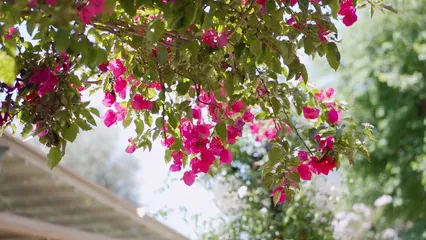
Speaking of conditions, keeping your soil healthy is crucial! Consider adding organic compost to enrich your soil. It’s like a spa day for your plants, keeping them happy and healthy!
4. Planting Bougainvillea
For successful planting, spring is the ideal season. This timing allows bougainvillea to establish roots before summer blooms. Start by selecting a sunny spot with well-drained soil. Clear the area of weeds and debris to create a healthy environment.
Next, prepare the soil by loosening it about 30 cm deep. Incorporate organic matter like compost to enhance drainage and nutrients. Now you’re ready to plant! Dig a hole twice the width of the root ball. Place the plant in the hole, ensuring the top of the root ball is level with the ground.
If you’re planting climbing varieties, provide support like trellises or fences. This encourages upward growth and showcases those stunning bracts. Space plants about 1 meter apart to allow for healthy airflow and growth.

Once planted, water the bougainvillea deeply but infrequently. This encourages strong root development. With the right care and conditions, your bougainvillea will flourish and bring vibrant colors to your garden.
5. Care and Maintenance
Caring for bougainvillea is straightforward, but a few key practices will ensure your plant thrives. Let’s break it down into watering, fertilizing, and pruning.
Watering Requirements
Bougainvillea prefers to dry out between watering sessions. In hot climates, water deeply every 7 to 10 days. In cooler areas, you might only need to water every two weeks. Overwatering can lead to root rot, so always check the soil. If the top inch feels dry, it’s time to water. Adjust your frequency based on rainfall and temperature. For example, during summer heat, you might need to water more often.
Fertilization Tips
To keep bougainvillea blooming, use a balanced fertilizer. Look for a formula with a higher phosphorus content, which promotes flowering. Apply fertilizer every 4 to 6 weeks during the growing season, typically spring through early fall. Be cautious not to over-fertilize, as this can lead to lush foliage at the expense of blooms. A good rule of thumb is to fertilize right before new growth starts in spring.
Pruning Techniques
Pruning is essential for maintaining bougainvillea’s shape and encouraging healthy growth. Aim to prune in late winter or early spring before the growing season begins. Remove any dead or weak branches to promote airflow. You can also shape the plant by cutting back long or leggy stems. This encourages a bushier appearance and more blooms. Remember, bougainvillea flowers on new growth, so don’t hesitate to trim back!
With these care tips, your bougainvillea will flourish, providing vibrant color and beauty to your garden. And to help you keep track of all this, a garden journal is a great idea! You can jot down your observations and plans, making you feel like a true gardening wizard.
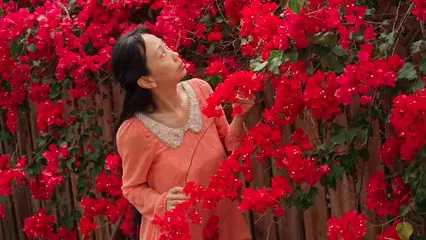
6. Common Pests and Diseases
Bougainvillea can face a few common challenges, but with attention, you can manage them effectively.
Common Pests
Watch for aphids and spider mites, which often target bougainvillea. Aphids are tiny, soft-bodied insects that may cluster on new growth. They suck sap and can lead to stunted growth. Spider mites, on the other hand, create fine webs and cause yellowing leaves. If you notice these pests, consider using insecticidal soap or neem oil to control them. For more information on controlling pests, check out this guide on common pests in japanese friendship gardens and how to control them.

Understanding how to manage pests effectively is crucial for maintaining healthy bougainvillea. common pests in japanese friendship gardens and how to control them
Symptoms of Diseases
Root rot is a significant concern for bougainvillea. It occurs when the roots sit in waterlogged soil, leading to yellowing leaves and eventual wilting. Make sure your plant has well-drained soil to prevent this issue. If you suspect root rot, remove the plant from the pot, trim away affected roots, and repot in fresh soil.
Prevention and Treatment Options
Regularly inspect your plant for signs of pests or diseases. Healthy plants are less susceptible to problems, so ensure your bougainvillea receives proper care. Maintain good airflow around the plant and avoid overhead watering to minimize humidity. If problems arise, act quickly to treat them. With proactive care, your bougainvillea will remain beautiful and vibrant!
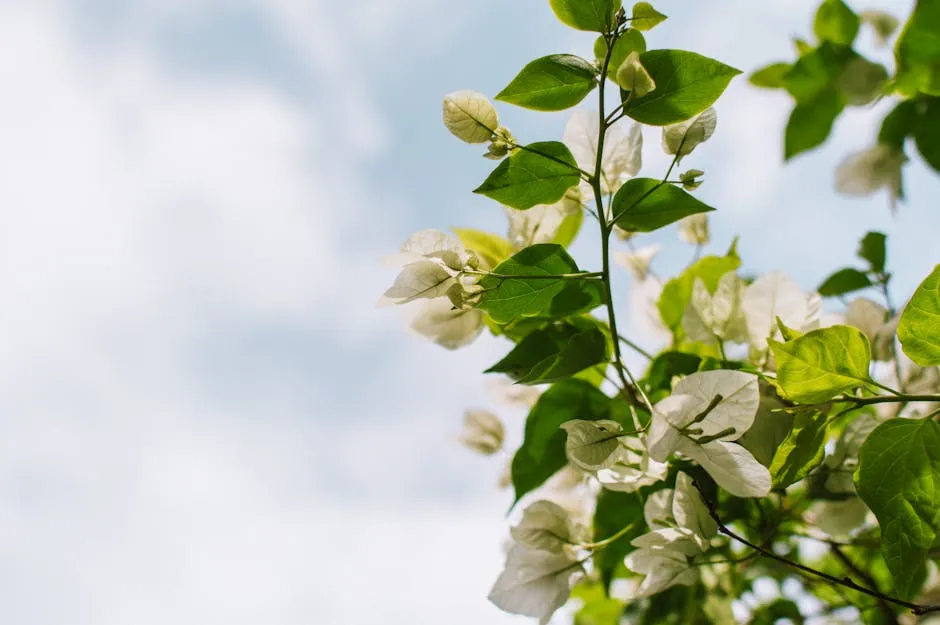
7. Bougainvillea in Landscaping
Bougainvillea adds vibrant splashes of color to any landscape. Its bold bracts are ideal for enhancing garden aesthetics. You can use bougainvillea in various ways, making it a versatile choice for outdoor decor.
Consider using bougainvillea as climbing plants on trellises or fences. This creates a stunning backdrop for other plants. The climbing nature of bougainvillea allows it to cover walls and structures, creating a lush, green environment. Alternatively, use it as a ground cover for a colorful, low-maintenance option. For more ideas on ground cover plants, check out our ultimate guide on ground cover plants.
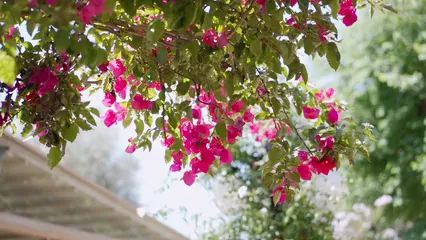
Using bougainvillea creatively in your landscape can greatly enhance its visual appeal, especially when combined with other ground cover options. ground cover plants
When deciding between containers or ground planting, think about your space. Container planting offers flexibility. You can move the plants around to catch the best sunlight. This method also makes it easier to manage their growth. On the other hand, planting bougainvillea directly in the ground promotes stronger root systems and encourages more extensive blooms.
One fantastic benefit of bougainvillea is its ability to attract pollinators. Bees and butterflies love these vibrant flowers, adding life to your garden. This not only helps your plants but also supports local ecosystems. To enhance this effect, consider planting pollinator-friendly seeds alongside your bougainvillea to create a vibrant ecosystem.
Incorporating bougainvillea into your landscaping can elevate your outdoor space. Its beauty and functionality make it a perfect choice for any gardener. Whether in a pot or sprawling across a fence, bougainvillea is sure to impress.
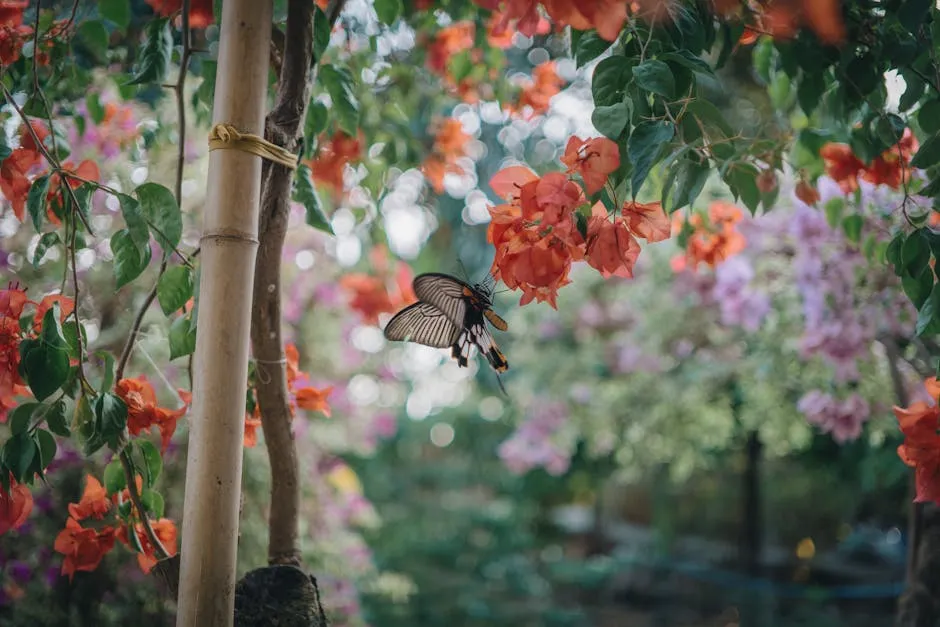
8. Propagation Techniques
Propagation of bougainvillea can be done through stem cuttings or seeds. However, stem cuttings are the most popular method. They offer a higher success rate and quicker results.
To start with stem cuttings, choose healthy, non-flowering stems. Cut about 10-15 cm long, ensuring each cutting has at least two nodes. Remove the lower leaves and dip the cut end in rooting hormone powder to encourage root development.
Timing is crucial for successful propagation. Late spring or early summer is ideal, as the plant is actively growing. Keep the cuttings moist and place them in a warm, bright location, out of direct sunlight. Use a well-draining potting mix for best results.
If you prefer growing from seeds, collect mature seeds from a healthy plant. Sow them in a seed starter mix, covering them lightly. Keep the soil moist and warm. Germination may take a few weeks, so be patient.
With proper care and timing, propagating bougainvillea can be a rewarding experience. Soon, you’ll have new plants ready to enhance your garden.
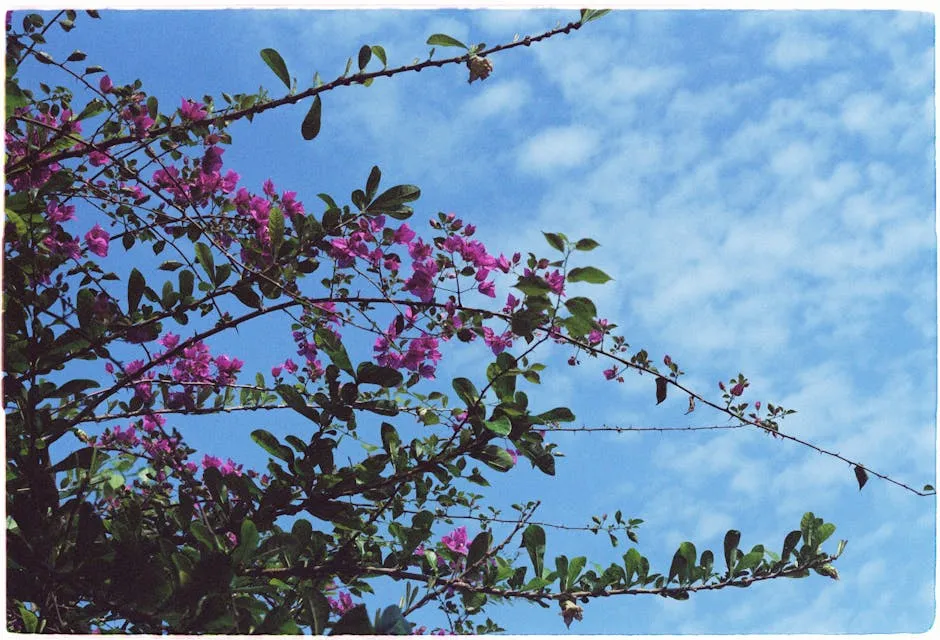
Conclusion
In summary, bougainvillea is a beautiful and versatile plant. Its vibrant colors can transform any garden into a lively space. Consider adding bougainvillea to your garden for stunning blooms and ecological benefits. If you found this post helpful, share it with fellow gardening enthusiasts!
And while you’re at it, don’t forget to check out some handy tools like a garden trowel for planting, or a soil moisture meter to keep track of your plants’ hydration levels!
Please let us know what you think about our content by leaving a comment down below!
Thank you for reading till here 🙂
All images from Pexels
